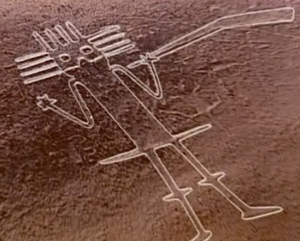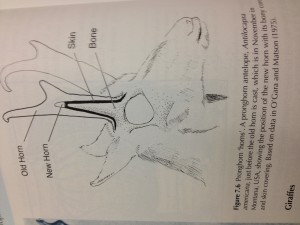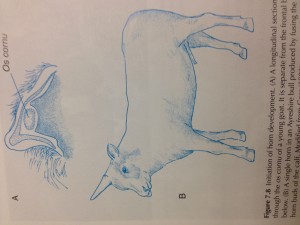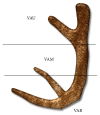The idea of using the growth factor FGF-2 and the need to understand how we can induce articular cartilage regeneration has been a couple of consistent topics I have brought up over and over again in this website. The FGF-2 aka Fibroblast Growth Factor has been one of the best candidates that is known at this time which can help the human body in vivo generate some type of cartilage-like tissue which we would definitely need to be added into the bone to remodel it in any way longitudinally. I wanted to summarize 4 PubMed studies I’ve found which show in either a direct or indirect way how effective using the FGF-2 growth factor is in getting cartilage to be formed.
Study #1: Differentiation of chondrogenic precursor cells during the regeneration of articular cartilage
- Y. Hirakif1, C. Shukunami, K. Iyama, H. Mizuta
- Department of Molecular Interaction and Tissue Engineering, Institute for Frontier Medical Sciences, Kyoto University, Kyoto; Departments of Surgical Pathology and Orthopedic Surgery, Kumamoto University School of Medicine, Kumamoto, Japan
Abstract
Objective: Full-thickness defects that penetrate articular cartilage are filled by fibrous, or fibrocartilaginous tissue and, to a very limited extent, also by hyaline cartilage. In rabbits, small full-thickness defects (to ≤53 mm in diameter) are capable of regenerating surfacing hyaline cartilage. However, chondrogenic differentiation does not occur in larger defects (≥5 mm in diameter). We studied the involvement of fibroblast growth factor-2 (FGF-2) in the cartilaginous repair response in full-thickness defects of articular cartilage in vivo, and attempted to facilitate cartilaginous repair of the defects by the local administration of FGF-2.
Design: The right knee joint of male adolescent Japanese white rabbits was entered through a medial parapatellan approach, and the patella was dislocated laterally to expose the articular surface of the femoral trochlea. Full-thickness defects were created in the weight-bearing area of the femoral trochlea with a hand-drill (the 5-mm diameter defects in 80 rabbits and the 3-mm diameter defects in 40 rabbits). The animals were fitted with an osmotic pump connected to silastic medical grade tubing, and a length of the tubing about 5 mm long was introduced into the articular knee cavity. The 5-mm-diameter defects received FGF-2 (50 pg/h) or sterile saline via an osmotic pump for the initial 2 weeks. Five animals each were sacrificed after 1, 2, 4, 8, or 24 weeks after creation of defects. The 3-mm diameter defects received a neutralizing monoclonal antibody against FGF-2 (50 nglh) or pre-immune mouse IgG (50 nglh) for the initial 2 weeks. Five animals each were sacrificed after 2, 3, or 4 weeks after creation of defects. The distal portion of each femur was removed, fixed, decalcified, and embedded in paraffin for the subsequent histological analysis. Sections were cut in the transverse plane, and histologically examined.
Results: The administration of FGF-2 (50 pg/h) resulted in successful regeneration of articular cartilage and the subchondral bone within 8 weeks after creation of 5-mm diameter defects. In these defects, undifferentiated mesenchymal cells initiated chondrogenic differentiation coupled with replacement by subchondral bone, resulting in the resurfacing of the defects by hyaline cartilage and the recovery of subchondral bone up to the original bone-articular cartilage junction. In contrast, the administration of a neutralizing monoclonal antibody against FGF-2 clearly interfered with the action of endogenous FGF-2 in 3-mm diameter defects, which were filled with fibrous tissue. None of the antibody-treated defects were covered with cartilage. We then assessed the proliferative capacity of the undifferentiated mesenchymal cells in the defects by immunostaining the proliferating cell nuclear antigen (PCNA) at 1 week after creation of defects. The capacity of reparative tissue to form cartilage was well correlated with the occurrence in the defects of a cell population that was PCNA-positive, undifferentiated, and capable of self-renewal.
Conclusions The local administration of FGF-2 resulted in the successful resurfacing of large (5 mm in diameter) defects by hyaline cartilage. Prechondrogenic mesenchymal cells were the likely targets of FGF-2, which probably promoted the formation of cartilage by stimulating a selective expansion of chondroprogenitor cells. Thus, activation of FGF-2 signalling is critically important for the induction of cartilaginous repair response in full-thickness articular cartilage.
- H. Chuma, M.D.†, H. Mizuta, M.D., Ph.D.†, S. Kudo, M.D., Ph.D.†, K. Takagi, M.D., Ph.D.†, Y. Hiraki,Ph.D.‡
- † Department of Orthopaedic and Neuro-Musculoskeletal Surgery, Faculty of Medical and Pharmaceutical Sciences, Kumamoto University, Kumamoto 860-8556, Japan
- ‡ Department of Cellular Differentiation, Institute for Frontier Medical Sciences, Kyoto University, Kyoto 606-8507, Japan
Summary
Objectives
Administration of fibroblast growth factor (FGF)-2 for 2 weeks induces a successful cartilaginous repair response in 5-mm full-thickness articular cartilage defects in rabbits. The purpose of this study was to investigate the effects of a short time exposure to FGF-2 on the repair of the defects.
Methods
Five-mm-diameter cylindrical defects, which do not repair spontaneously, were created in the femoral trochlea of the rabbit knees. The defects were administered sterile saline or FGF-2 (150 pg/h) via an osmotic pump for the initial 1 day, 3 days, or 2 weeks, and we assessed the FGF-2 action on the proliferation and migration of mesenchymal cells in the reparative tissue. Using a total of 126 rabbits, we performed three sets of experiments. We also studied the effect of FGF-2 on migration of marrow-derived mesenchymal cells in vitro.
Results
FGF-2 treatment for 1 day or 3 days induced the sequential chondrogenic repair responses that led to successful cartilaginous resurfacing of defects within 8 weeks as well as the 2-week treatment did. We confirmed by a radioisotope study that FGF-2 injected was rapidly eliminated from the defects (a residual ratio of 50% within 30 min). The effect of FGF-2 on cultured marrow-derived cells suggested that FGF-2 facilitated the mobilization and migration of replicating mesenchymal cells from bone marrow.
Conclusions
Only 1 day exposure to FGF-2 is sufficient for induction of the chondrogenic repair response in 5-mm-diameter full-thickness defects of articular cartilage in rabbits. FGF-2 stimulated the recruitment of mesenchymal cells into the defects, which was a limiting step for the induction of cartilage.
- Tetsuya Yamamoto†, Shigeyuki Wakitani‡, Kazuhiko Imoto†, Takako Hattori§, Hiroyuki Nakaya§,Masanobu Saito†, Kazuo Yonenobu†
- † Department of Orthopaedic Surgery, Osaka-Minami National Hospital, Kawachinagano, Japan
- ‡ Department of Orthopaedic Surgery, Shinshu University School of Medicine, Matsumoto, Japan
- § Department of Orthopaedic Surgery, Osaka University Graduate School of Medicine, Suita, Japan
Abstract
Objective
To investigate cartilage response to fibroblast growth factor-2 (FGF-2) with increasing age in vivo, we examined the effect of FGF-2 on partial thickness defects of immature and mature rabbits.
Design
Sixty-nine Japanese white rabbits (34 immature rabbits, 35 mature rabbits) were examined. We made experimental partial thickness defects in articular cartilage of the knees. Then, we injected FGF-2 into the knees eight times, immediately after surgery and every 2 days for 2 weeks. A single dose of FGF-2 was 10 ng/0.1 ml or 100 ng/0.1 ml. In the control group, 0.1 ml saline was injected on the same time schedule. The rabbits were sacrificed at intervals following surgery that ranged from 2 to 48 weeks. The specimens were stained with toluidine blue and examined microscopically. We used a modified semiquantitative scale for evaluating the histological appearance of repair.
Results
In immature rabbits, the cartilage repair in the FGF-2 (100 ng)-treated group was significantly better than that of the other groups. The defects were almost completely repaired with chondrocytes that showed a round to polygonal morphology, and large amounts of extracellular matrix with intense metachromatic staining.
In mature rabbits, however, there was apparently no effect from FGF-2 in either group.
Conclusions
Application of FGF-2 facilitated cartilage repair in partial thickness defects in immature rabbits, but not in mature ones.
- H. Takafuji, T. Suzuki, Y. Okubo, K. Fujimura, K. Bessho
- Department of Oral and Maxillofacial Surgery, Graduate School of Medicine, Kyoto University, 54 Syogoin, Kawahara-cho, Sakyo-ku, Kyoto-shi 606-8507, Japan
Abstract
The purpose of this study was to investigate the therapeutic usefulness of fibroblast growth factor-2 (FGF-2) in rabbit temporomandibular joints (TMJ) with osteoarthritis. A 10-mm3 defect was bored in the surface of the mandibular condyle head. The animals were divided into four groups: two test groups in which the defect was filled with lyophilized collagen containing 0.1 or 1.0 μg of FGF-2, and two control groups, in which the defects were filled with lyophilized collagen without FGF-2 or left empty. The defective sites were examined under a light microscope 3 weeks after surgery. Initiation of cartilage formation was observed in the defects filled with 0.1 μg of FGF-2, but only a small amount of cartilage was found in the defects of the 1.0-μg FGF-2- treated group. In the control groups, soft-tissue repair only or no tissue repair was found. In vivo, a dose of 0.1 μg of FGF-2 can stimulate articular cartilage restoration in defects of the TMJ in rabbits, although determining the effective concentration range of FGF-2 may be difficult. The present results suggest that an optimum concentration of FGF-2 could restore defects of TMJ articular cartilage clinically.
Analysis & Interpretation:
From studies 2 & 1, we see that the FGF-2 application on induced articular cartilage defects even up to 5 mm in diameter in area can lead to some type of cartilage repair. Study 1 suggest that not just fibrocartilage can be generated, but even the hyaline cartilage which articular cartilage is made of can be restored back. Not only that, the prochondrogenic progenitor mesenchymal cells seem to be the ones that are really affected by the FGF-2 and they only seem to differentiate in the chondrogenic lineage. The subchondral layer underneath the articular cartilage is also healed as well, and any mesenchymal stem cells that leak from the bone’s intermedullary cavity seem to be pushed towards the chondrogenic lineage. Study #2 agrees with the stimulating ability and function of the FGF-2 but also adds that even one administration of FGF-2 is enough to see chondrogenic results. The FGF-2 seems to be able to stimulate the mesenchymal stem cells to even start moving towards the defect in some mobile fashion.
Study #3 only states that when young test subjects are given the FGF-2 for cartilage repair in comparison to older subjects, the FGF-2 has a far more effect ability in cartilage regeneration ability. Older subjects had almost no cartilage regeneration response but younger testing animals had a much better result. This study was important in showing that like so many other treatments for medical repair or cosmetic enhancement, older test subjects have a far less chance of getting the benefits of treatments.
Study #4 shows that when the FGF-2 was used in application on lab rabbits on the temporomandibular joints (TMJ) area, it seems to show that there might be an optmum amonut of FGF-2 administration for highest level of articular cartilage repair. This study is important to show that the idea of using more FGF-2 is not always better. When the 4 groups were divided with two groups being the controls, it was seen that 0.1 micrograms of FGF-2 was better than 1.0 micrograms of FGF-2 in repairing the articular cartilage in the temporomandibular joint (TMJ) of the rabbits.




